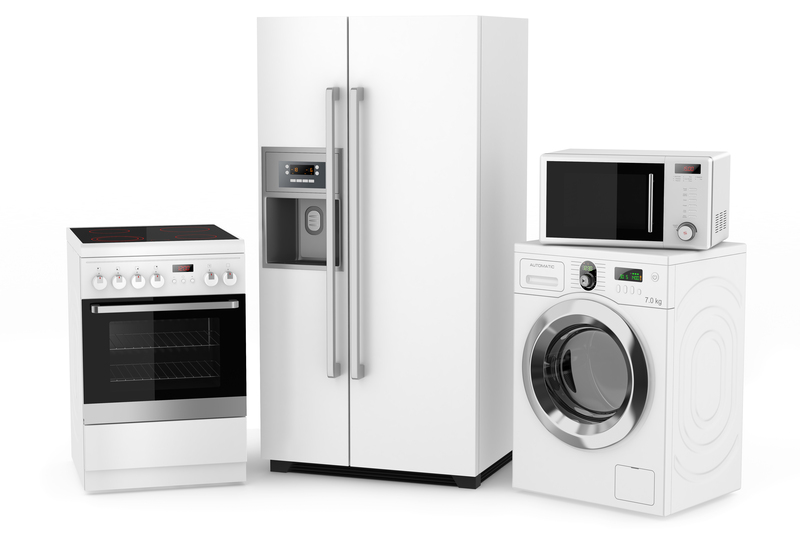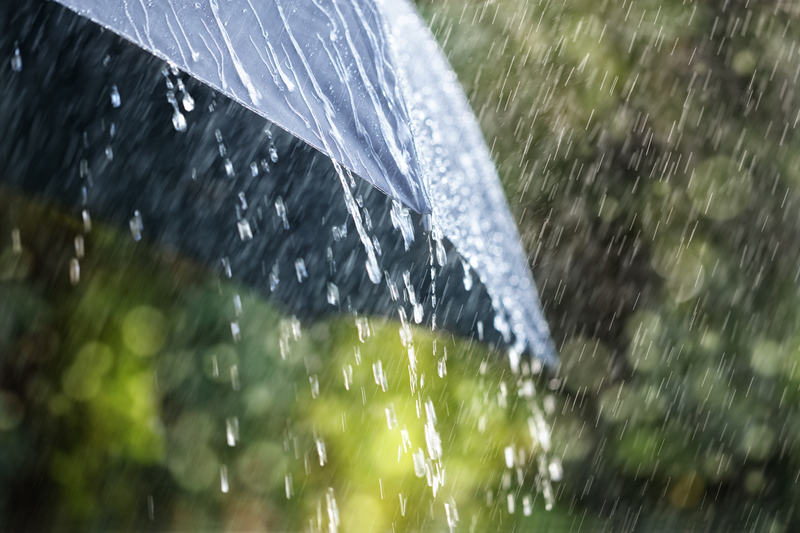How to Prevent Damage by Properly Storing Your Freezer Between Uses
Freezers are essential household and commercial appliances, preserving food for long periods and offering convenience and cost-saving. However, if you use your freezer seasonally or store it for extended periods, proper storage between uses becomes crucial to prevent damage, prolong lifespan, and protect your investment. In this comprehensive guide, we'll explore effective methods to prevent freezer damage by properly storing your appliance, ensuring efficiency and reliability for years to come.
Why Proper Freezer Storage Is Important
Before diving into best practices for freezer storage, it's important to understand why taking time to store your freezer correctly matters:
- Avoids mold, mildew, and unpleasant odours. Moist interiors and leftover food residues can lead to bacterial growth, which quickly results in bad smells and potential health hazards.
- Prevents mechanical and electrical issues. Exposure to moisture, dust, temperature fluctuations, and pests can damage internal components, wiring, and insulation.
- Preserves seals and gaskets. Poor storage can cause gaskets to become brittle or develop mold, decreasing their effectiveness and potentially leading to energy losses.
- Maintains appearance and value. Taking care of both interior and exterior surfaces prevents corrosion, scratches, and fading.
- Saves time and money. Caring for your freezer reduces maintenance costs, prevents inconvenient repairs, and extends the lifespan of your appliance.
Who Should Store Their Freezer Between Uses?
Seasonal businesses, cottage owners, and households who only use their freezers occasionally (during harvest or hunting seasons, for example), benefit most from knowing how to store a freezer when not in use. These steps apply to both upright and chest freezer models, as well as standalone and integrated units.

Pre-Storage Preparation
1. Thorough Cleaning
Cleaning before storage is essential to prevent bacterial and fungal growth, as well as stubborn odors that are hard to eliminate after long periods.
- Unplug your freezer and remove all food contents. Dispose of expired or unwanted items responsibly.
- Take out removable shelves, bins, baskets, and drawers. Wash these parts with warm soapy water, rinse well, and dry completely.
- Using a mild detergent and a soft cloth or sponge, wipe down the entire interior, including hard-to-reach corners.
- After cleaning, wipe with a solution of 1 tablespoon of baking soda to 1 quart of water to neutralize odors and prevent mold.
- Allow the freezer to air-dry thoroughly. Moisture left behind is a common cause of mold and rust during storage!
2. Defrosting the Freezer
If your freezer is a manual defrost model or has built-up frost, it's crucial to completely defrost the appliance before storing. Frost and ice can expand or melt during temperature changes, leading to water damage:
- Leave the freezer unplugged and the doors or lids open in a well-ventilated area.
- Place towels around the freezer to soak up melting ice.
- Never use sharp objects to remove ice - this can puncture cooling coils or liners.
- Wipe away any remaining water and ensure the cavity is dry before moving to storage.
How to Store a Freezer When Not in Use
1. Choose the Right Storage Location
Where you store your freezer impacts its condition and future performance. Ideal places are:
- Cool, dry, well-ventilated spaces such as basements, garages, or dedicated storage rooms.
- Outbuildings that are weatherproof and rodent-proof, avoiding direct sunlight and rain.
Avoid areas prone to:
- Extreme temperatures (both hot and freezing cold)
- High humidity or condensation
- Flooding or leaks from pipes/roofs
- Dust, dirt, or chemical fumes
2. Right Positioning Matters
How you place your freezer affects its structure and components.
- Always store upright models standing up. Storing them on their side or back can cause compressor oil to flow into the cooling lines, leading to damage.
- Chest freezers are best stored flat on their base.
- Ensure the surface underneath is solid, level, and clean. Propping up with bricks, wood, or other objects can stress the frame.
3. Keep the Doors Or Lids Slightly Open
To prevent mold, mildew, and odors, never close up your freezer completely during storage.
- Use a small spacer (such as a rolled-up towel or a block of foam) to wedge the door or lid open by at least 1-2 inches. This allows air circulation.
- Secure the spacer so that it can't fall out if the unit is bumped.
- Alternatively, most freezers include a 'storage mode' feature that locks the lid slightly ajar. Consult your manual for details.
4. Protect Seals and Gaskets
- Wipe the door gasket (seal) with a mild soap solution and inspect for cracks, mold, or food residues.
- Mix a thin layer of petroleum jelly or silicone lubricant onto the gasket to keep it soft and prevent drying out.
- Inspect gaskets before each use and after storage for best freezer performance.
5. Cover Your Freezer for Extra Protection
Shield your appliance from dust, pests, and accidental scrapes by using a breathable cover (like a cotton sheet or appliance cover with ventilation holes). Never wrap in plastic, as this can trap moisture and promote corrosion or mold growth.
- Check covers regularly to ensure they are securely in place and dry.
- Remove the cover once every few months to allow extra ventilation and inspect for any developing issues.
What to Avoid During Freezer Storage
- Never store with food inside - even packaging can deteriorate and attract pests or bacteria during long periods.
- Don't place heavy items on top of the freezer, as this can damage the lid or cause warping.
- Avoid storing in direct sunlight, near heating appliances, or exposed to the elements.
- Don't seal doors airtight or tape them shut. Lack of airflow leads to musty smells and mold.
- Don't cover with plastic tarps or bubble wrap - choose only breathable materials.
Quick Checklist: Steps to Store Your Freezer Safely Between Uses
- Unplug the freezer and defrost it.
- Clean interior, exterior, shelves, and baskets thoroughly.
- Dry all components completely with towels and air-dry as needed.
- Choose a clean, dry, cool, and stable storage location away from direct sun or heat.
- Store the freezer upright and secure the door or lid partially open with a spacer.
- Lubricate and check door gaskets and seals.
- Cover with a breathable cover and never use plastic.
- Check on your freezer every few months to ensure dryness and cleanliness.
Additional Tips for Freezer Storage and Handling
- Move your freezer carefully. Always keep it upright, and use a dolly to prevent back injuries and appliance strain.
- If storing for several months, consider placing a few open boxes of baking soda inside to absorb lingering odors.
- Make sure any drain holes or vents are clear and clean before storage.
- Label your freezer (especially in shared storage spaces) to avoid confusion and accidental unplugging or misuse.
- Store manuals and necessary accessories inside a zip bag and tape to the back of the unit for easy access in the future.
Before Using Your Freezer Again
Proper storage ensures an easier return to operation when you need your freezer again! Follow these simple steps for trouble-free startup:
- Remove the spacer and clean the interior with a damp cloth and mild soap.
- Inspect for signs of mold, dust, or insect nests, and clean thoroughly if needed.
- Check the power cord, plug, and internal wiring for signs of wear, rodent damage, or corrosion before reconnecting.
- Ensure the freezer is perfectly upright for at least 4-6 hours before plugging in, especially if it was tilted during storage.
- Run empty for a couple of hours to ensure proper cooling before loading with food.

Frequently Asked Questions about Freezer Storage
How long can a freezer be stored unplugged?
A freezer can be safely stored unplugged for months or even years, provided all moisture is removed, and the interior is kept ventilated, clean, and dry. Proper storage procedures are key to avoiding internal and external damage.
Can I store a freezer in an unheated garage or shed?
It's possible, but with precautions: Ensure the space remains above freezing temperatures, is dry, and free of condensation or severe humidity. Extreme temperatures may affect components and insulation, so check your manufacturer's guidelines for minimum and maximum safe storage conditions.
Should I store my freezer with the door open or closed?
Always keep the door or lid slightly open using a spacer to prevent mustiness and mold buildup. Never seal it airtight during extended storage.
How do I prevent rodents or insects from entering my stored freezer?
Empty and clean the interior thoroughly, and keep doors propped open just enough for air, not large enough for pests to enter. Placing pest deterrents nearby (not inside) and storing in a sealed, clean space also helps.
Conclusion: Protect Your Appliance with Smart Storage
Proper freezer storage between uses isn't just about putting it aside--it's an important investment in the longevity and efficiency of your appliance. By following these comprehensive steps for cleaning, defrosting, ventilating, and protecting your freezer during periods of non-use, you will prevent costly damage and enjoy optimal food preservation for years to come.
If you're looking to maximize the value and reliability of your freezer, make smart storage a regular habit. Your freezer--and your future self--will thank you!
Did you find our guide helpful? Bookmark this page for reference, and share with friends or colleagues who might benefit from knowing how to prevent freezer damage with the best storage methods!



